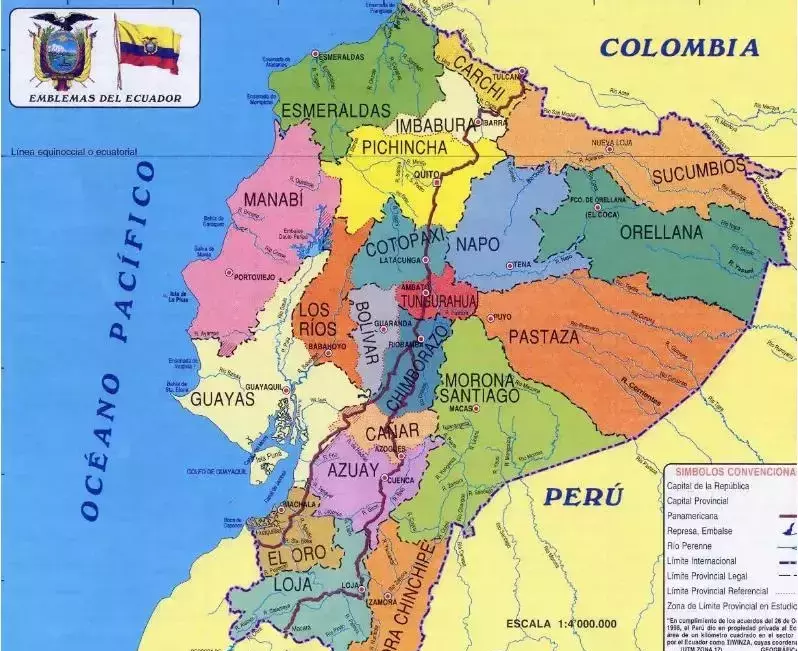Original: Photography by Xu Yueping
The Republic of Ecuador, located in northwestern South America, covers an area of only 256,000 square kilometers. It is one of the countries traversed by the equator, Ecuador, which means equator in Spanish. The archipelago, made up of 13 small islands, the famous Galapagos Islands, is "the place where Darwin broke up with God". The longest mountain range in the world, the Andes, runs through Ecuador.
Ecuador is a small country with a unique ecological environment. From the west coast to the east, the Andes, the Amazon basin, have contributed to the rich diversity of species. In terms of birds alone, there are more than 1,600 species of birds, and the density of bird species per unit area ranks first in the world, which is the bird watching paradise that bird watchers around the world dream of.
Let's follow the lens of Xu Yueping, a veteran birdwatcher, to appreciate the colorful Donna finches living in Eritrea.

Ecuador Image: Internet
Golden Donna Finch
Donna finch, also known as naked-nosed finch and Tangjia la finch, is mostly distributed in the Americas.
The Donna finch family is an unusually large family, and most of the donna finch is social. Male and female birds are some very similar, and some are very different.
Silver-throated Donna Finch
They are all Donna finch, but the size and shape of the bird's beak are quite diverse, and some Donna finch evolved to eat only one of the fruits, nectar, insects or seeds, but most of them are omnivorous.
Scrub Donner Finch
White-waisted Donna Finch
Some Donna finches only occasionally consume a small amount of nectar, but a few Donna finch species specialize in nectar, an energy-rich food with long, slightly curved beaks; some have hooks at the ends of their upper beaks to hold tubular flowers while piercing the corolla with their lower beaks.
Swallow finches Donna finch
Tattooed black donna finch
The feathers of the Donna finch are extremely colorful, ranging from a variety of bright colours to grey, olive, black and white.
Orange-waisted thick-billed Donna Finch
Some Donna finch birds communicate and assert territory through chirping, chirping, and showing off behavior; some birds have a singing system that seems to be underdeveloped and has a strange call; some birds rarely make sounds; and only a few birds emit continuous cheerful chirps.
Gold-necked Tangara Finch
Fire-faced Tangara Sparrow
Blue-necked Tangara Finch
Chestnut-headed Tangara finches
Black-capped Tangara finches
Huiban Tangara Sparrow
Blue-winged collared naked-nosed finch
These Donner finches in this article were all photographed in Ecuador. There are many threatened bird species in the Donna finches, the main threat comes from habitat destruction.